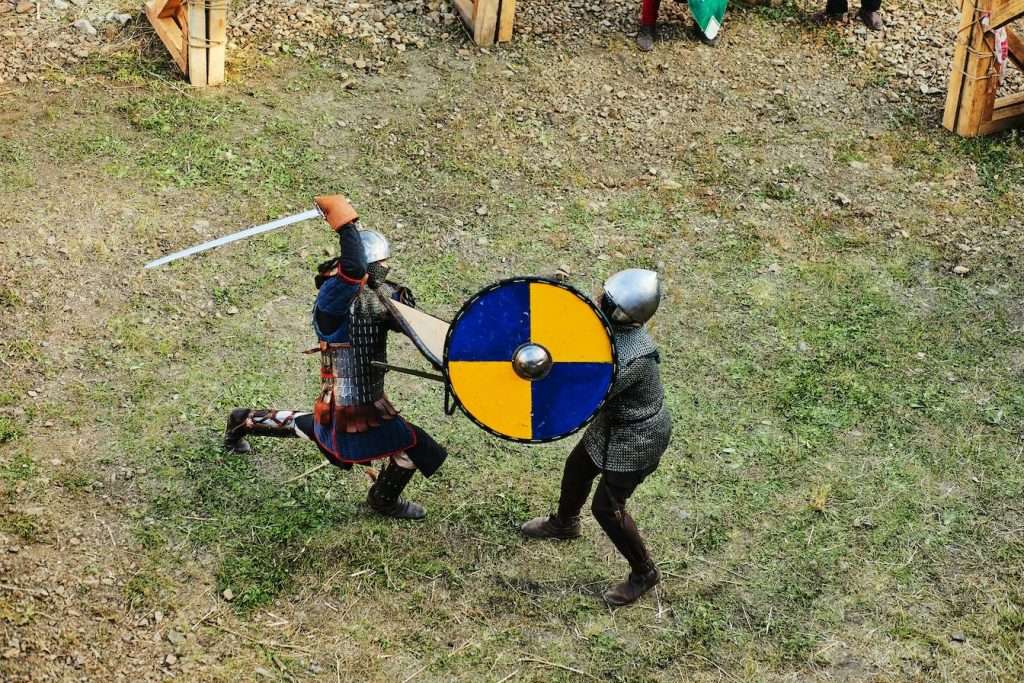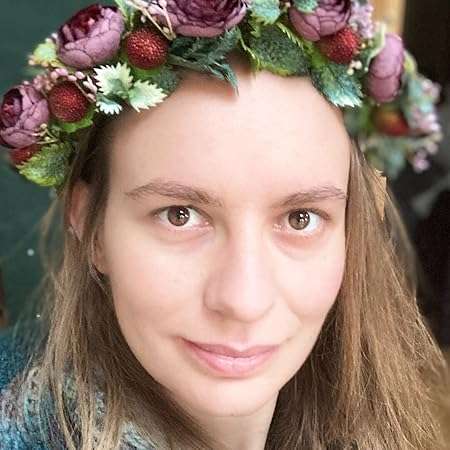How can fantasy writers get first-hand experience of worlds and periods either long gone—or never-were? Alexandra Beaumont is here to argue the case for LARPing as research.

One of the biggest challenges about writing fantasy books is believably sculpting the parts that we don’t have anything to draw on from our real-world experience—this can include magic, strange creatures or fantasy combat. Two out of three of those are harder to replicate, but understanding what fantasy combat can feel like is something that can be on some level experienced through Live Action Role Play.Â
What is Live Action Role Play?
Live Action Role Play (LARP) is a hobby that takes games such as Dungeons and Dragons or Call of Cthulhu and translates them into a live setting. It can come in all sorts of different shapes and sizes, as well as different settings.Â
The most popular, however, is by far and away historical fantasy. The largest LARPs in the UK attract between two to three thousand people, and there are even larger LARPs in other countries.
Typically, when you go to a LARP, there will be a rules system and a set of guidelines for how to create a character. You have to decide whether you will play a fighter or a magic caster, and usually select a fantasy race as well. But more importantly than all of those details, you need to decide who your character actually is—what do they love and what do they hate? What one thing could they never live without?
These are all questions we must ask ourselves when characterising the people in our books.Â
Using LARP experience to shape your story
There are three elements of LARPing that can particularly help a fantasy author, and all of these are centred around developing believable fantasy tension. These are:
- Creating characters with distinctive valuesÂ
- Believable fantasy conflictÂ
- Believable fantasy combat
Characters
Let’s talk first about how to create a vibrant, believable character. Often, I suggest to people trying to develop a good character to play at a LARP event to think about this: ‘what is your character’s red line?’Â
By this I mean, what will you never compromise on as your character, or only compromise on if ABSOLUTELY made to.
I usually also suggest that these red lines should be more nuanced than something simple like ‘I will always stand by my friends’ or ‘I care about my brother above all things’. While those are strong groundings, they can be a little bit overused and can be developed a little bit more to make a more layered character.Â
(Photo of Alexandra in action by Winter Pict Photography)

Characters in books, much like characters in LARP, feel like they breathe themselves into reality once you introduce this kind of layering. Suddenly, ‘I will always stand by my friends’ can become ‘I try to always stand by my friends, but deep down I know I am cursed to one day betray someone close to me. I do not know when that day will come, but I will resist it if I can’. The second example changes to: ‘I abandoned my fated path to defend my brother, but he has left without a trace and now I will do anything to convince my people to let me come home.’
The beauty of creating red lines like these for a character is that you then know how they will react to certain situations by extension of their guiding principles. This is a good exercise for writing books anyway, but translate this into LARP and a kind of magic happens—you meet other characters and they have their own red lines. Some of them won’t meet in the middle, and will cause disagreement. This brings us to conflict.Â
Conflict
The strength of being able to watch this conflict play out when you meet a character who has opposing red lines to yours is that you can see how the tension ramps up. Recently I edited my latest book, Dissonance of Bird Song (out in August through Brigids Gate Press), and one of the comments that came back in the developmental edit was that there needed to be a bit more foreshadowing of conflict.Â
To do this, I thought back to conflicts my character had faced at LARP and asked myself:
- What caused them? What was the first spark of the conflict?Â
- Did I start it, or did someone else?
- What misunderstanding or opposing viewpoint stopped us reconciling the conflict easily?

Let’s go back to the example about the wayward brother, which is an example from one of my LARP characters. In this LARP, my character and my character’s brother had started with very similar ideals, but I had written those ideals to be ones that I had taken on to be supportive of my character’s brother. When he disappeared, my character no longer had to pretend. When the brother returned some years later, my character was a different person.
(Photo by Gioele Fazzeri on Unsplash)
I thought back to this, and asked myself the questions as above:
- The conflict had been caused by making sacrifices for someone my character cared for, and then losing the person in question.
- His leaving started a period of reflection for my character where she realised who she wanted to be, not who she had been. So, when my character’s brother returned, she challenged him on leaving and coming back with an expectation nothing had changed.Â
- We couldn’t resolve this easily, because our characters had become different people; I now had my own red lines for the character that differed from the ones he held.
Going back to the way this impacted on writing the foreshadowing for Dissonance of Bird Song, I thought about those layers of conflict—which dreams were being smashed on the rocks at the height of tension, and how could I seed the idea that this was going to be a problem.
If I were to write a book about the two LARP siblings from above, I would probably foreshadow that my character’s brother had a wanderlust that could never be sated, and so when it comes full circle to him leaving it has a crushing inevitability.
Finally, let’s come to combat
When conflict gets to the point of there being no resolution, it often becomes combat at LARP events. In fantasy books, combat is sometimes dealt with very suddenly. This can feel dramatic, but can also somehow feel over too quickly. There is a lot to be said for what happens directly before and after a combat as well, as a way to make the actual fighting feel engaging.
I am advocating here for fantasy authors trying LARP at least once to see what combat is like. While it will never be perfect, there are a number of elements that can help us influence writing combat in fantasy (or historical) novels.
(Photo by Lance Reis on Unsplash)

At a LARP event, you will feel the adrenaline of the following when it comes to the battle:
- Before most battles, there is a breathless tension like a thunderstorm waiting to shatter. If there are two lines of enemies facing off against each other, they won’t always charge straight in. They will be watching from the sidelines, people will be beating their shields, and war leaders will be making final entreaties to their troops to fight well and be ready.
- When the storm breaks, there is usually a small moment where we attempt to follow the orders—but much like in paintings of mediaeval battles, the lines can become intermingled and chaotic and you have to run or fight your way back to your friends.
- In many battles, there is then a period of carnage that follows: people’s characters will be lying on the ground bleeding (in the game, not in reality!) and others will be calling for healers to tend them. It is in this step that I really advocate for authors trying LARP—there is no real way to understand the adrenaline mingled with the horror of seeing your friends far away and knowing they are dying in the game and you can’t reach them. It shows you something critical: how time and perception tricks you in these moments of adrenaline. Time passes simultaneously quickly and slowly, as it feels like your friend has been bleeding for a long time but it is taking you a long time to get to them.
- Then there is the aftermath. Some people will have died and, for many of us, this is the only time you will experience having to carry bodies off of a battlefield to then pray to the gods for their passage to the next life before heading to the tavern to drink a cup of mead in their memory and light a bonfire to sing around.
I’ve gone into the level of detail to show all the visceral steps to these battles that are easy to not consider if you haven’t experienced it.Â
“Make it believable”
So, the point of all this? When it comes to fantasy, we as authors are told: make it believable, build the world and forge relatable characters. It is hard to do any of that through a ‘write what you know’ angle, which is the advice often given.
LARPing is a way to start to turn fantasy worlds into something you do ‘know’, and can feel in the same passionate way as something you have seen happen in reality. Who knows, you may even find your fate in the fantasy worlds forged at LARP.


